Rheb and mTOR regulate neuronal polarity through Rap1B
- PMID: 18842593
- PMCID: PMC2662285
- DOI: 10.1074/jbc.M802431200
Rheb and mTOR regulate neuronal polarity through Rap1B
Abstract
The development of polarized hippocampal neurons with a single axon and multiple dendrites depends on the activity of phosphoinositide 3-kinase (PI3K) and the GTPase Rap1B. Here we show that PI3K regulates axon specification and elongation through the GTPase Rheb and its target mammalian target of rapamycin (mTOR). Overexpression of Rheb induces the formation of multiple axons, whereas its suppression by RNA interference blocks axon specification. mTOR is a central regulator of translation that phosphorylates eIF4E-binding proteins like 4E-BP1. Axon formation was suppressed by inhibition of mTOR and expression of mTOR-insensitive 4E-BP1 mutants. Inhibition of PI3K or mTOR reduced the level of Rap1B, which acts downstream of Rheb and mTOR. The ubiquitin E3 ligase Smurf2 mediates the restriction of Rap1B by initiating its degradation. Suppression of Smruf2 by RNA interference is able to compensate the loss of Rheb. These results indicate that the mTOR pathway is required to counteract the Smurf2-initiated degradation of Rap1B during the establishment of neuronal polarity.
Figures
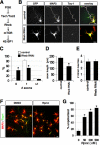
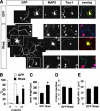
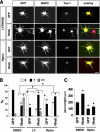
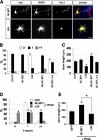
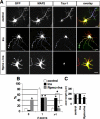

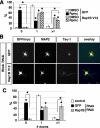

References
-
- Arimura, N., and Kaibuchi, K. (2007) Nat. Rev. Neurosci. 8 194-205 - PubMed
-
- Da Silva, J. S., and Dotti, C. G. (2002) Nat. Rev. Neurosci. 3 694-704 - PubMed
-
- Nakahira, E., and Yuasa, S. (2005) J. Comp. Neurol. 483 329-340 - PubMed
-
- Noctor, S. C., Martinez-Cerdeno, V., Ivic, L., and Kriegstein, A. R. (2004) Nat. Neurosci. 7 136-144 - PubMed
Publication types
MeSH terms
Substances
LinkOut - more resources
Full Text Sources
Other Literature Sources
Molecular Biology Databases
Miscellaneous

